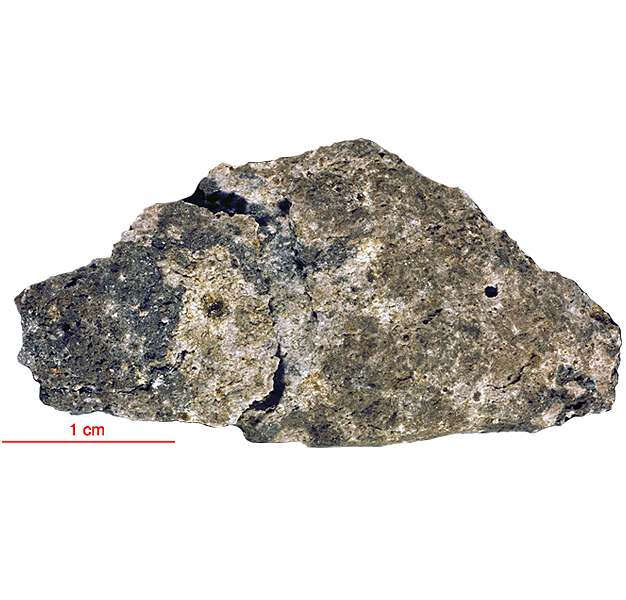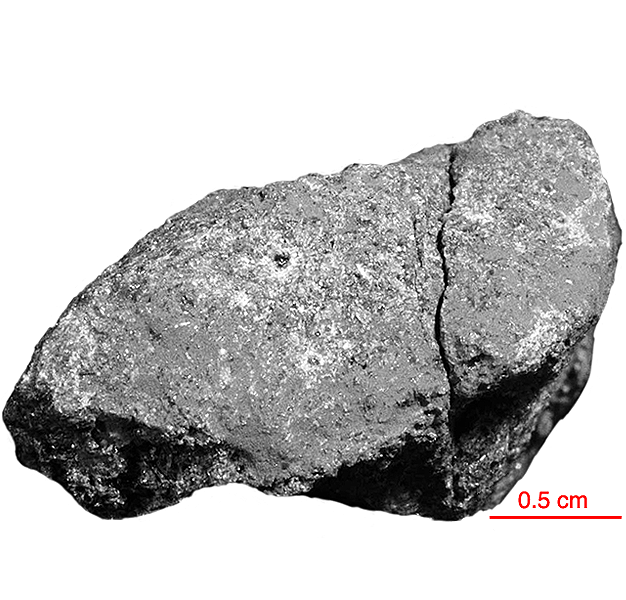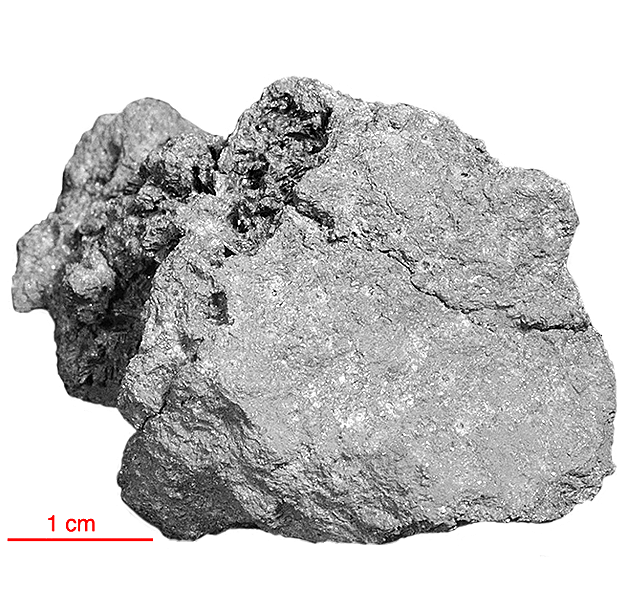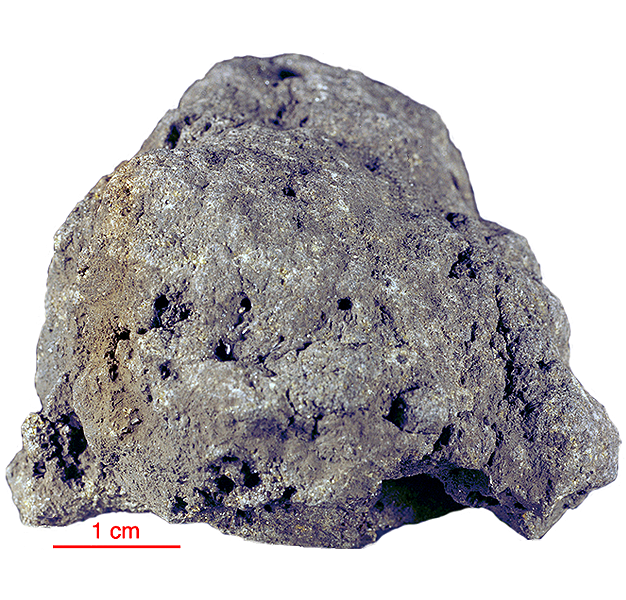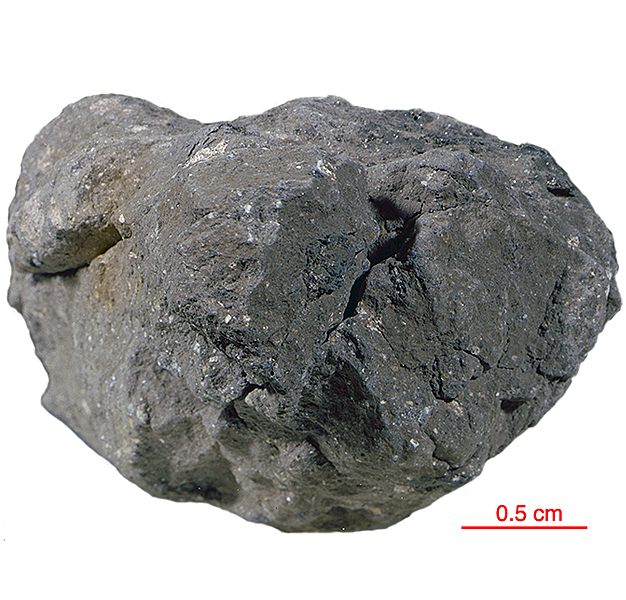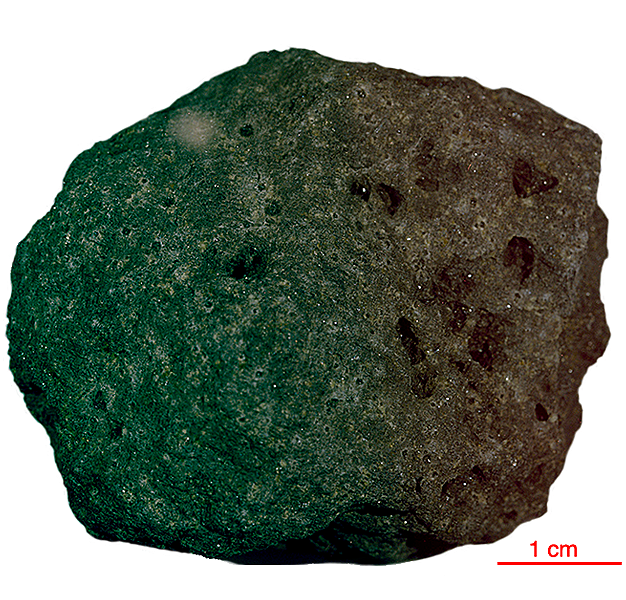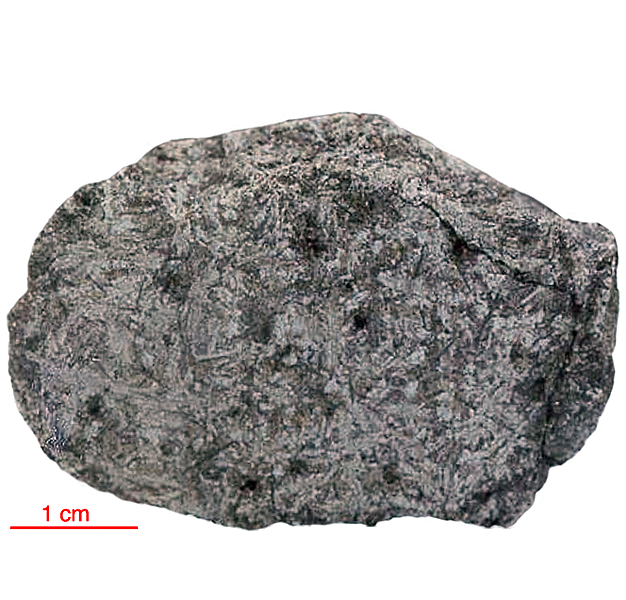
Fact sheet
12039 is a coarse grained porphyritic basalt which consists of pyroxene phenocrysts (0.8 to 4 mm), some of which are mantled by pyroxferroite, set in a matrix of intergrown plagioclase crystals, anhedral pyroxene, rounded laths of ilmenite and euhedral laths of tridymite (0.05 to 1 mm). Long needles of ilmenite and tridymite cut across plagioclase and pyroxene. Many of the clinopyroxene crystals show optical zonation from very light tan interiors (augite) to dark tan (ferroaugite) to reddish-brown (ferrohedenbergite) with an abrupt change to light yellow-green borders (pyroxferroite). Ilmenite is the major opaque phase and is intergrown with ulvöspinel. Tranquillityite, troilite, cristobalite and metallic iron are present in the groundmass.
The sample weighed 255 grams before analysis and is 3.2 billion years old.
Further details of this and other Apollo samples are here: http://curator.jsc.nasa.gov/lunar/
Apollo 12 returned 34 kilograms of samples, including 45 rocks, samples of lunar 'soil', and several core tubes that included material from as much as 40 centimetres below the lunar surface.
Apollo 12 rocks were almost all basalts, with only two breccias in the returned samples. The basalts at the Apollo 12 site formed 3.1 to 3.3 billion years ago, roughly 500 million years later than the Apollo 11 basalts. Overall, there is much less of the element titanium in the Apollo 12 samples than in the Apollo 11 samples, which explains the more reddish colour of this region. The differences in age and chemical composition between the Apollo 11 and Apollo 12 samples demonstrate that mare volcanism did not occur as a single, Moon-wide melting event.
Apollo 12 was launched on 14 November 1969.

